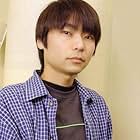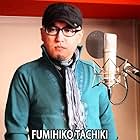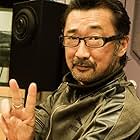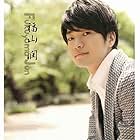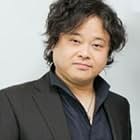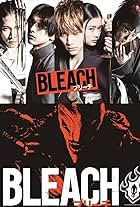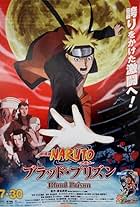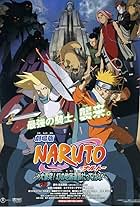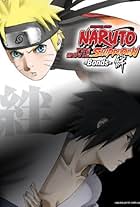AVALIAÇÃO DA IMDb
7,0/10
3,7 mil
SUA AVALIAÇÃO
Adicionar um enredo no seu idiomaAfter the treasured Ouin is stolen, Toshiro Hitsugaya disappears and becomes suspected of treason. When the Soul Society calls for his capture and execution, Substitute Soul Reaper Ichigo Ku... Ler tudoAfter the treasured Ouin is stolen, Toshiro Hitsugaya disappears and becomes suspected of treason. When the Soul Society calls for his capture and execution, Substitute Soul Reaper Ichigo Kurosaki vows to prove Hitsugaya's innocence.After the treasured Ouin is stolen, Toshiro Hitsugaya disappears and becomes suspected of treason. When the Soul Society calls for his capture and execution, Substitute Soul Reaper Ichigo Kurosaki vows to prove Hitsugaya's innocence.
Masakazu Morita
- Ichigo Kurosaki
- (narração)
Fumiko Orikasa
- Rukia Kuchiki
- (narração)
Hiroki Yasumoto
- Yasutora 'Chad' Sado
- (narração)
Yuki Matsuoka
- Orihime Inoue
- (narração)
Noriaki Sugiyama
- Uryu Ishida
- (narração)
Romi Park
- Toushiro Hitsugaya
- (narração)
- (as Romi Pak)
Akira Ishida
- Soujiro Kusaka
- (narração)
Kentarô Itô
- Renji Abarai
- (narração)
Fumihiko Tachiki
- Kenpachi Zaraki
- (narração)
Kiyoyuki Yanada
- Tessai Tsukabishi
- (narração)
Akio Ôtsuka
- Shunsui Kyoraku
- (narração)
Noriko Shitaya
- Ururu Tsumugiya
- (narração)
Jun Fukuyama
- Yumichika Ayasegawa
- (narração)
Nobuyuki Hiyama
- Ikkaku Madarame
- (narração)
Takako Honda
- Jinta Hanakari
- (narração)
Hideo Ishikawa
- Jushiro Ukitake
- (narração)
Rie Kugimiya
- Karin Kurosaki
- (narração)
- …
- Direção
- Roteiristas
- Elenco e equipe completos
- Produção, bilheteria e muito mais no IMDbPro
Enredo
Você sabia?
- CuriosidadesThis anime film is located chronologically after the episode of Urahara's Decision, Orihime's Thoughts (2007) from Bleach (2004) and before the anime film of Gekijôban Burîchi: Feido to~u Burakku - Kimi no na o yobu (2008).
- ConexõesFollowed by Gekijôban Burîchi: Feido to~u Burakku - Kimi no na o yobu (2008)
Avaliação em destaque
I'm a huge fan of the Bleach manga and a moderate fan of the TV series (except the filler sagas). This review assumes that people are familiar with the Bleach manga and/ or TV series.
Today I watched the English dubbed versions of both "The Diamond Dust Rebellion" (TDDR) and "Memories of Nobody" (MoN). I have already posted a review of MoN and the reason for that is a lot of reviewers seemed to be letting their Bleach fandom prevent them from actually thinking for themselves and accurately reviewing the movie. People were blindly giving 9/10 or even 10/10 to a film that would be unlikely to score 5/10 from any critic. When I came to watch TDDR I was desperately hoping they had recognised their previous errors and put a bit more effort in this time around.
As luck would have it, they did.
The biggest improvement over the first film is the screen writing. The plot has far more depth and is actually interesting. Where the first hour of MoN nearly put me to sleep, TDDR is actually entertaining outside of the fight scenes. The plot isn't perfect by any means, but it's definitely good enough to stop me complaining about it. Sure the dialogue is still pretty cheesy, but anyone who watches shows like Bleach will tell you that you have to take it with a pinch of salt.
Also TDDR is a lot more polished than MoN in terms of attention to detail. All the little bits and pieces that make a movie seem more realistic were really lacking in MoN. This is difficult to explain without using an example from the movie, so for once I'm going to use one (but avoid plot information).
When Renji needs to speak to Rangiku the chance passing of Shunsui means he and his lieutenant Nanao are then present during their conversation. While the important conversation goes on between Renji and Rangiku (the focal point for the viewer), Shunsui sits silently on the step beside them with his hat in his lap (he rarely removes his hat, even when fighting). He has done this out of respect because one of the characters is in a sort of mourning period. When important information is divulged during the conversation Shunsui begins absent mindedly twirling his hat around in his lap, his expression unchanging. This shows that he is thinking about what he just heard and formulating a plan, however he still looks like Captain Cool - Shunsui in a nut shell. My point here is that although Shunsui is not the focal point of the scene details have been added to make him seem more natural, even though most people won't notice (although this particular example is more obvious than most, hence why I can remember it lol). This is important because the more natural a scene is the easier it is for you to place yourself in that scene and become absorbed by the story.
Another thing that sets TDDR apart from its predecessor is the way they have integrated the popular "minor" characters into the story. In MoN it was obvious that it was very high priority to make sure all the most popular characters were featured in the movie to make sure the fans were happy, however because the script was so half-baked they ended up throwing them on screen with almost no explanation and it all seemed a bit silly. In TDDR they've still managed to feature all of the popular characters, they've made their appearances seem like a natural progression of the story, and yet they have done this without actually having to weave them into the main plot in any great detail (look at Kenpachi's entrance in MoN, then look at his entrance in TDDR, for example).
The voice acting in the English dub of TDDR is top notch.
Right. Now to the bad points.
There are two major problems with this movie as far as I'm concerned, the first and most important of which being the animation. Maybe I'm just imagining things, but slightly more care seems to have been taken with the animation and drawing just for the fight scenes, but even so they are still well below par for animated films. This shows that the people behind TDDR were still not prepared to expand their market beyond existing Bleach fans, which is a pity because this movie was good enough to do it.
The second problem is the music. At times the music in Bleach is so cheesy it makes me cringe. I can't believe no one has walked into the board room and said "Hey guys, has anyone realised how stupid it is to use a song with penetrating, high pitched vocals as a background track for fight scenes? Not only does it detract from the action and fail in its role as background music, but the song we're using sounds like a bad '80s electro-pop track that never made it out of the garage. Maybe we should hire a sound guy or something?"
Regardless The Diamond Dust Rebellion is worth watching even if you're not an existing fan of the series, although I would recommend watching the first one or two episodes as the movies take a lot for granted.
I've given it 7/10 but you can add an extra 2 points to that if you're a fan of the series.
Today I watched the English dubbed versions of both "The Diamond Dust Rebellion" (TDDR) and "Memories of Nobody" (MoN). I have already posted a review of MoN and the reason for that is a lot of reviewers seemed to be letting their Bleach fandom prevent them from actually thinking for themselves and accurately reviewing the movie. People were blindly giving 9/10 or even 10/10 to a film that would be unlikely to score 5/10 from any critic. When I came to watch TDDR I was desperately hoping they had recognised their previous errors and put a bit more effort in this time around.
As luck would have it, they did.
The biggest improvement over the first film is the screen writing. The plot has far more depth and is actually interesting. Where the first hour of MoN nearly put me to sleep, TDDR is actually entertaining outside of the fight scenes. The plot isn't perfect by any means, but it's definitely good enough to stop me complaining about it. Sure the dialogue is still pretty cheesy, but anyone who watches shows like Bleach will tell you that you have to take it with a pinch of salt.
Also TDDR is a lot more polished than MoN in terms of attention to detail. All the little bits and pieces that make a movie seem more realistic were really lacking in MoN. This is difficult to explain without using an example from the movie, so for once I'm going to use one (but avoid plot information).
When Renji needs to speak to Rangiku the chance passing of Shunsui means he and his lieutenant Nanao are then present during their conversation. While the important conversation goes on between Renji and Rangiku (the focal point for the viewer), Shunsui sits silently on the step beside them with his hat in his lap (he rarely removes his hat, even when fighting). He has done this out of respect because one of the characters is in a sort of mourning period. When important information is divulged during the conversation Shunsui begins absent mindedly twirling his hat around in his lap, his expression unchanging. This shows that he is thinking about what he just heard and formulating a plan, however he still looks like Captain Cool - Shunsui in a nut shell. My point here is that although Shunsui is not the focal point of the scene details have been added to make him seem more natural, even though most people won't notice (although this particular example is more obvious than most, hence why I can remember it lol). This is important because the more natural a scene is the easier it is for you to place yourself in that scene and become absorbed by the story.
Another thing that sets TDDR apart from its predecessor is the way they have integrated the popular "minor" characters into the story. In MoN it was obvious that it was very high priority to make sure all the most popular characters were featured in the movie to make sure the fans were happy, however because the script was so half-baked they ended up throwing them on screen with almost no explanation and it all seemed a bit silly. In TDDR they've still managed to feature all of the popular characters, they've made their appearances seem like a natural progression of the story, and yet they have done this without actually having to weave them into the main plot in any great detail (look at Kenpachi's entrance in MoN, then look at his entrance in TDDR, for example).
The voice acting in the English dub of TDDR is top notch.
Right. Now to the bad points.
There are two major problems with this movie as far as I'm concerned, the first and most important of which being the animation. Maybe I'm just imagining things, but slightly more care seems to have been taken with the animation and drawing just for the fight scenes, but even so they are still well below par for animated films. This shows that the people behind TDDR were still not prepared to expand their market beyond existing Bleach fans, which is a pity because this movie was good enough to do it.
The second problem is the music. At times the music in Bleach is so cheesy it makes me cringe. I can't believe no one has walked into the board room and said "Hey guys, has anyone realised how stupid it is to use a song with penetrating, high pitched vocals as a background track for fight scenes? Not only does it detract from the action and fail in its role as background music, but the song we're using sounds like a bad '80s electro-pop track that never made it out of the garage. Maybe we should hire a sound guy or something?"
Regardless The Diamond Dust Rebellion is worth watching even if you're not an existing fan of the series, although I would recommend watching the first one or two episodes as the movies take a lot for granted.
I've given it 7/10 but you can add an extra 2 points to that if you're a fan of the series.
- droctagon-638-646664
- 18 de jan. de 2010
- Link permanente
Principais escolhas
Faça login para avaliar e ver a lista de recomendações personalizadas
- How long is Bleach the Movie: The DiamondDust Rebellion?Fornecido pela Alexa
Detalhes
- Data de lançamento
- País de origem
- Idioma
- Também conhecido como
- Bleach the Movie: The DiamondDust Rebellion
- Empresas de produção
- Consulte mais créditos da empresa na IMDbPro
Bilheteria
- Faturamento bruto mundial
- US$ 6.916.899
- Tempo de duração1 hora 32 minutos
- Cor
- Mixagem de som
- Proporção
- 1.85 : 1
Contribua para esta página
Sugerir uma alteração ou adicionar conteúdo ausente

Principal brecha
By what name was Gekijô ban Bleach: Za Daiyamondo Dasuto Reberion - Mô hitotsu no hyôrinmaru (2007) officially released in Canada in English?
Responda











